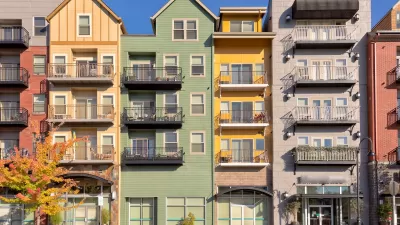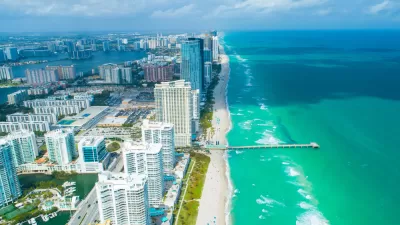Vivan S. Toy examines the fate of several condo developments in New York that employed brand name architects to sell their products during the housing boom, and finds mixed results.
Featuring the handiwork of celebrity designers such as Richard Meier, Enrique Norten, Robert A. M. Stern, Philip Johnson, Philippe Starck and Giorgio Armani, condo developers across New York enlisted famous designers' names and products as marketing tools to lure buyers during the hyper-competitive housing boom. Toy investigates how several of these buildings have fared, "[n]ow that the dust has settled and these buildings have had a few years to age and see some turnover."
While the starchitect craze was a boon to the popularity of the profession in general, and to those globe-trotting designers riding the wave, investors and developers have seen mixed results. Toy has found that, "[s]ome buildings with celebrity architects or designers have maintained or exceeded their boom-time prices, and they undoubtedly owe their success at least partly to that star power. Where prices have not held up, though, a celebrated designer was not enough to overcome other market forces, including price levels still about 10 percent below the highs of 2008. Many buildings with lackluster track records are in less-than-ideal locations or in areas that perhaps weren't quite ready for high design and its corresponding price tag."
As buyers had become more discerning in recent years, it's not clear if developers, or buyers, still see value in a famous name.
FULL STORY: Boldface Buildings in the Cold Light of Now

Alabama: Trump Terminates Settlements for Black Communities Harmed By Raw Sewage
Trump deemed the landmark civil rights agreement “illegal DEI and environmental justice policy.”

Study: Maui’s Plan to Convert Vacation Rentals to Long-Term Housing Could Cause Nearly $1 Billion Economic Loss
The plan would reduce visitor accommodation by 25% resulting in 1,900 jobs lost.

Planetizen Federal Action Tracker
A weekly monitor of how Trump’s orders and actions are impacting planners and planning in America.

Waymo Gets Permission to Map SF’s Market Street
If allowed to operate on the traffic-restricted street, Waymo’s autonomous taxis would have a leg up over ride-hailing competitors — and counter the city’s efforts to grow bike and pedestrian on the thoroughfare.

Parklet Symposium Highlights the Success of Shared Spaces
Parklets got a boost during the Covid-19 pandemic, when the concept was translated to outdoor dining programs that offered restaurants a lifeline during the shutdown.

Federal Homelessness Agency Places Entire Staff on Leave
The U.S. Interagency Council on Homelessness is the only federal agency dedicated to preventing and ending homelessness.
Urban Design for Planners 1: Software Tools
This six-course series explores essential urban design concepts using open source software and equips planners with the tools they need to participate fully in the urban design process.
Planning for Universal Design
Learn the tools for implementing Universal Design in planning regulations.
Caltrans
Smith Gee Studio
Institute for Housing and Urban Development Studies (IHS)
City of Grandview
Harvard GSD Executive Education
Toledo-Lucas County Plan Commissions
Salt Lake City
NYU Wagner Graduate School of Public Service




























